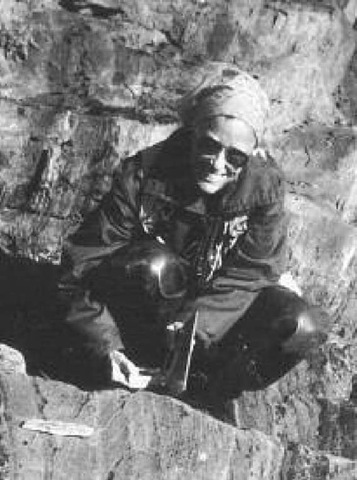(1939- ) American Petrologist
Maria Luisa Crawford has about five major interests in which she has established herself as one of the foremost authorities in the field. These interests seem to evolve with time and she makes a marked shift in her research always to emerge in a leading role. Early in her career, Crawford was one of the first scientists to utilize the newly invented electron microprobe on metamorphic rocks. However, she soon switched directions and became interested in lunar petrology and geochemistry. She conducted research on mare basalts and determined the crystallization history and the origin of these flood lavas that filled craters early in the history of the Moon. The flooding of these lavas came as the result of impacts from large meteorites. The studies involved analysis of the rocks that were returned to Earth in the Apollo lunar missions. She was especially interested in basalt called KREEP, a name based on elemental enrichment (potassium: K, rare earth elements: REE, phosphorus: P).
Weecha Crawford is especially known for her research in Alaska and British Columbia, Canada. With colleagues, she studied the processes in intense continental collision at the peak of tectonism in “Crustal Formation at Depth During Continental Collision,” among others. They proposed magma genesis and emplacement into rapidly developing major folds and faults that they named the “tectonic surge.” These plutons are rapidly uplifted and exhumed. They have distinct large scale and contact metamorphic relations around them. These structural, metamorphic, and plutonic relations are all part of a major study of the accretion of continental fragments in the growth of continents. By adding small pieces of continent together in a series of collisions, full-sized continents may be built. The southern Alaska/British Columbia, Canada, area may be the best place on Earth to conduct such a study. This project is named ACCRETE and has been well received by the geologic community.
The other area in which Dr. Crawford has established herself as an expert is on the regional geology of the Pennsylvania Piedmont. She conducts studies on the metamorphic petrology, geochemistry, and geochronology on these complex rocks. Based upon these studies, plate tectonic reconstructions are proposed. Much of this work is done with graduate students. Crawford has been an outstanding mentor to her students as well as a teacher. She has been especially encouraging to women seeking to establish careers in geology. In this vein, Dr. Crawford has been an active member of the Association of Women Geoscientists. Through her efforts in publication, mentoring, and public relations, she has been a real factor in making pathways for women to enter the male-dominated field of geology.
Maria Luisa Crawford was born on July 18, 1939, in Beverly, Massachusetts. She attended Bryn Mawr College in Pennsylvania where she earned a bachelor of arts degree in geology in 1960. Before she began her graduate studies, she visited the University of Oslo in Norway in 1960 and 1961 on a Fulbright Fellowship. Upon her return, she enrolled at the University of California at Berkeley, where she earned her doctorate in 1965. Upon graduation, she joined the faculty at her alma mater of Bryn Mawr College, where she has remained for her entire career. Crawford was named the William R. Kenan Jr. professor of geology from 1985 to 1992. She also served as department chair from 1976 to 1988 and again from 1998 to present. She was a visiting professor at several colleges including the University of Wisconsin. She is married to William Crawford, a fellow professor of geology at Bryn Mawr.
Crawford’s very productive career has included some 68 articles in international journals, professional volumes, and governmental reports. She also edited one book and wrote 18 entries for topics and similar publications. Many of these papers are required reading for lunar studies as well as metamorphic petrology of the Pennsylvania Piedmont and British Columbia, Canada. Crawford has received several awards in recognition of her research and teaching including a MacArthur Fellowship and the Outstanding Educator Award from the Association for Women Geoscientists Foundation. Crawford has also been very successful in obtaining grant funding from the National Science Foundation to support her research.
Weecha Crawford doing field research in British Columbia, Canada
Crawford has performed significant service to the geologic community. She has served on numerous committees for the National Science Foundation, the Geological Society of America, the Mineralogical Society of America, and the National Academy of Sciences. She was a member of the advisory board for both Princeton University, New Jersey, and Stanford University, California. She was on the evaluating committee for some 11 departments nationwide, including such notable schools as Dartmouth College, New Hampshire; University of Toronto, Canada; and Bates College, Maine, among others. Crawford has also served in editorial positions including associate editor for Geological Society of America Bulletin and an editorial board member for Geology and Computers and Geosciences.

